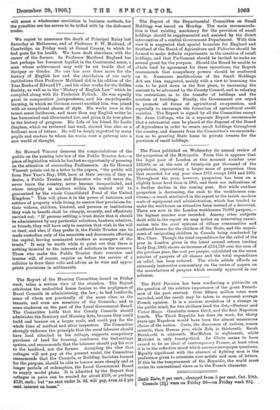The Times published on Wednesday its annual review of the
pauperism of the Metropolis. From this it appears that the legal poor of London at this moment number over 123,000, or at the rate of twenty-six per thousand of the population, representing a larger mass of pauperism than that recorded for any year since 1872 except 1904 and 1905. Throughout the year, however, pauperism has been on a slightly lower level than in 1905, and there are indications of a further decline in the coming year. But while outdoor pauperism is decreasing, the rush to the workhouses con- tinues,—a result attributed in the report to the lavish modern scale of equipment and administration, which has tended to make the workhouse an attractive force instead of a deterrent. There are now in the London workhouses 78,603 paupers,— the highest number ever recorded. Among other subjects dealt with in the report we may notice an interesting exami- nation into the rival systems of village communities and• scattered homes for the children of the State, and the experi- ment of emigrating children to Canada being conducted by Mrs. Clare. Though the total expenditure for the relief of the poor in London given in the latest annual return (ending Lady Day, 1905) shows an increase of 2114,759 over the sum of the previous year, the cost per pauper, calculated on the mean number of paupers of all classes and the total expenditure on relief, has been reduced. The whole article affords an extremely instructive commentary on the series of papers on the manufacture of paupers which recently appeared in our columns.


































 Previous page
Previous page